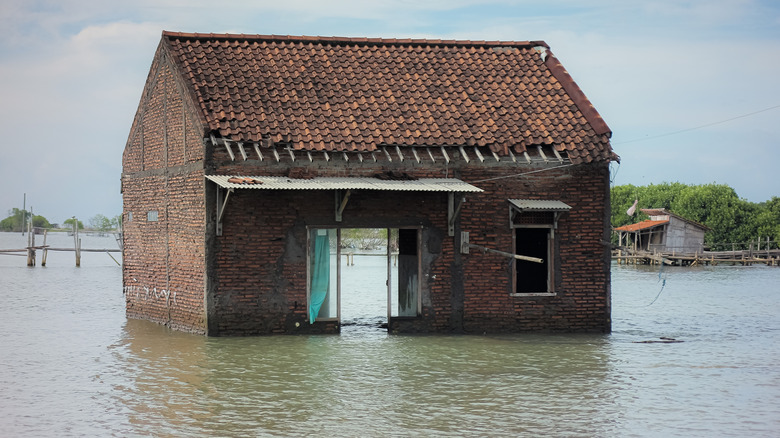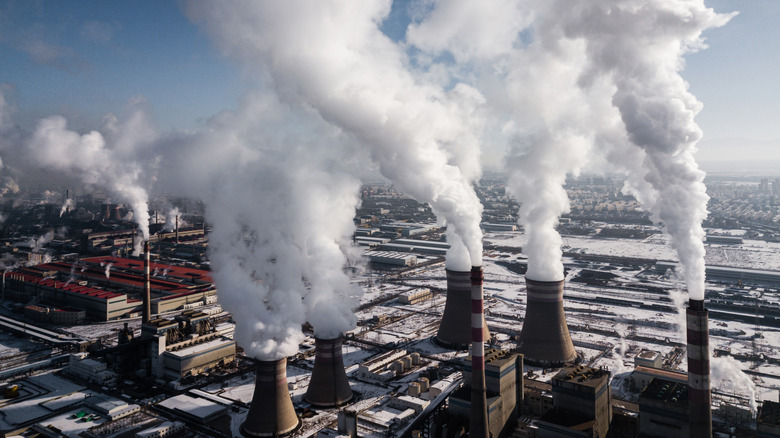Scientists Are Worried About A Collapse Of This Atlantic Ocean Current: Here's Why
A certain current in the Atlantic Ocean that is essential for temperature regulation is in danger of collapsing. The Atlantic Meridional Overturning Circulation, also known as the AMOC, runs the length of the Atlantic Ocean, including the tip of South America, the Caribbean, and all the way north to Greenland. One of its major benefits is maintaining the European climate by moving warm air from the Equator north.
Climatologist and oceanographer at the National Research Center, Sandro Carniel, explained the AMOC's function to Renewable Matter. "This circulation, of which the Gulf Stream is a part, plays the fundamental role of a climate equalizer and is essentially triggered by the weight of water, its density. The colder and saltier the water is, the greater its density, and the easier it is for its mass to sink. Whereas if the water is warm and fresh (i.e., not salty), it is lighter and therefore stays at the surface more."
The extreme importance of the AMOC is being threatened by greenhouse gas emissions, a driving force in global warming. Global warming would be a direct contributor to an AMOC collapse. If this is not prevented, the consequences could be catastrophic and include drastic temperature changes, altered weather patterns, and even an ice age event.
Why would this Atlantic current collapse?
Global warming is disrupting the way the currents flow due to melting ice caps and glaciers. Carniel continued to explain to Renewable Matter, "The huge amounts of melting ice are pouring an incredible amount of fresh water into the North Atlantic. Less and less salty and warmer waters are helping to lag the general circulation of currents."
This is not a new or sudden phenomenon. In 2018, the journal Nature revealed that the buoyancy of the Atlantic Meridional Overturning Circulation had decreased by 15 percent over 70 years.
While the AMOC has been affected due to global warming, it has not collapsed yet. To prevent this, greenhouse gas emissions need to be massively reduced. Industrial and manufacturing activities, transportation, and animal agriculture are all driving forces behind large amounts of greenhouse gas emissions. Despite efforts to implement better renewable energy and cleaner practices, the UN claims we are failing at attempts to control climate change.
What would happen if the AMOC collapsed?
If the AMOC collapsed, European cities would get colder by up to 27 degrees within a few decades. So a temperature of 41 degrees could drop to 14. Comparatively, the Southern Hemisphere would get much warmer. Rising sea levels could send coastal regions underwater and also contribute to increased coastal erosion and more severe storm surges.
The impact on weather patterns would be widespread. Europe would experience more violent storms. Major droughts would plague Asia. The changing weather would drastically reduce crop yield, and a full ecosystem collapse could occur across the northern Atlantic.
Scientists have a historical reference point for such an event. About 12,900 years ago, the AMOC was halted when Lake Agassiz melted and unleashed massive amounts of freshwater into the sea. It's believed the lake's melting was caused by a comet. The subsequent halt of the AMOC caused over one thousand years of ice age conditions in parts of Europe and North America. Unless we are able to get a handle on global warming and protect the Atlantic Meridional Overturning Circulation, this could be the future we have to prepare for.


